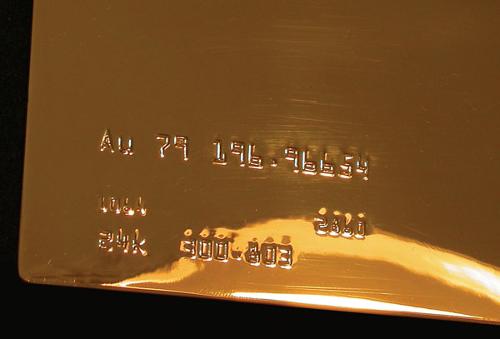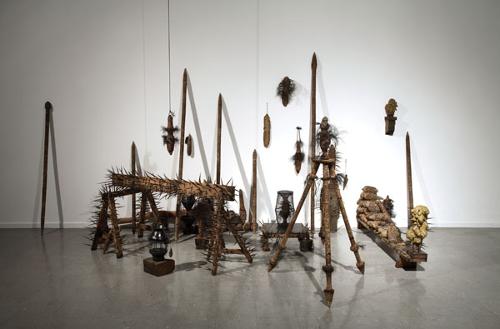.jpg)
An Aboriginal panel participant in the first Asia Pacific Triennial (APT) in 1993 related to me that after responding to the invitation, she realised on the day that she was the only Aboriginal speaker. Being so affronted by the Indigenous absence she stated she would never come back (and hasn't). One of the nagging criticisms of Brisbane's hugely successful APT has been their handling of 'the Aboriginal problem' and finding a space for the Asian and Pacific within us; those local Australian societies of Asian and Pacific heritage who have had a long and deep relationship with our national identity; though often folded/secreted within. Finding a credible comfortable conceptual space and opportunity for local participation rather than artist heroes from major economic giants of the region has lingered as a quandary of what has otherwise been a major achievement.
In Paris in the mid 1800s the work of the officially accepted and exhibited artists in the Academy became so atrophied and exclusive that the Emperor intervened to establish an exhibition of the rejected artwork and other parallel alternative events. For the first APTs Brisbane's Institute of Modern Art, and a number of commercial galleries, provided a form of 'Salons des Refuses' which contrasted and extended the themes of the main event. Sadly some now feel the IMA has morphed into a semi-official out-gallery of QGA/GOMA and no longer fulfills this role. Maybe the Emperor of Queensland needs to act? In this environment it's good to see someone like artist and curator Jenny Fraser actively providing another 'opening' for artists beyondthe official frame. The medium is the message and in placing themselves in Raw Space Gallery, incorporated Parisian style inside a cafe and bar, they were truly alternative to the 'Big Art Gallery' just across the back alleyway.
In my recent stay in Japan my hosts stuffed me with masses of food and drink at every turn until I complained and queried why I was being fattened like some prime Kobe beef carcass. It was explained to me that as the lack of a common language restricted the depth of communication that could occur between us they kept laying on the food to ensure my happiness. I often wonder how much communication really transpires in blockbuster events and whether the level of exchange is in inverse proportion to the level of the party laid on.
The Other APT exhibition explored issues for ‘Australia’s’ Native peoples and our role in the Asia Pacific Region, and also dealt with the issues of the migration of our neighbours including the importance of Place, Legend, Identity, Politics and Mutual Respect. All in the interest of open art dialogue. Although the exhibition of over 21 artists featured works from Aboriginal, Torres Strait Islander, Melanesian, Polynesian, Maori and Asian peoples based in Australia, it was in the margins and blurred border regions of each of these definitions that the concept of the exhibition lay. Ambitiously it operated almost on an all-in, shotgun effect in order to achieve this connection to the edge, democratically featuring painting, digital prints, moving image, installations and performance of all kinds, scales and degrees of excellence and reputation from local grassroots artists. Parts of course succeed more than others but with this type of ‘happening’ there can be no notion of merely ‘sour grapes’, as some of the original energy, communication, excitement, and feeling of ownership of the art process is generated and experienced. This is the energy major art events struggle to maintain. The work called Framed, Polytoxic’s collaboration with Chantall Fraser [no relation] on opening night in the restricted street level window box, contained some of the best aesthetic qualities of ironically called ‘hybrid’ artwork. These contrasted with, but complemented, the classically formal crafted rainforest shields and swords of Paul Bong in the next box.
The inside-outside nature of the exhibition space contributed to the overall balance of the show. ‘you can be heroes’ – Jenny Fraser’s own contribution was the community, fraternal ‘Native All Stars’, framed T-shirts and card collectibles. Charles Street’s silkscreen prints, using a colour theory type of montage are reminiscent of the proximity of PNG and our indifferent connection to it as a cultural and social site. He has recently worked in the now famous sculpture centre of Aurukun on west Cape York. Archie Moore's poignant colonial landscape talked of the indigenous absence, the great silence in Australian history concerning the Aboriginal presence. Ann Fuata's wandering black bobby pinned character performance confronted attempts to control our self-image and personal sexuality. Overall an amazing mixed cavalcade that was well worth the effort and must happen next time.
A closing footnote - down the road in Westend the mysterious studio of the 'proppaNow' Indigenous art group presented their initial exhibition There Goes the Neighbourhood, to provide a bookend to the other APT A strong all Aboriginal artist show, it was made really interesting for me by the new work of their younger members: the photographic series 50 percent by Tony, Albert and the Window of Opportunity












